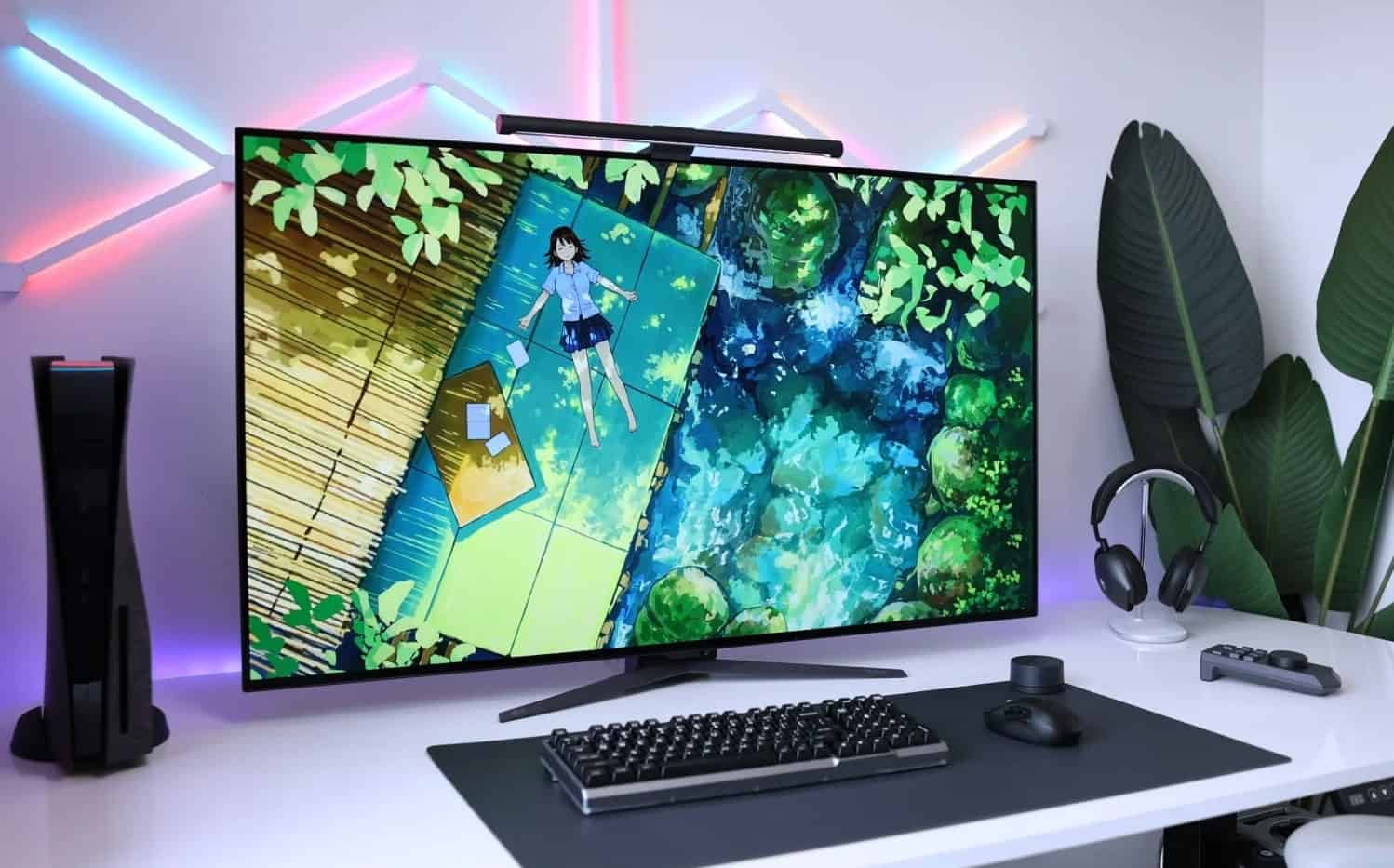The Easy Guide on Contrast Ratio
The contrast ratio is a measure of the difference in luminance between the light and dark elements of a display. It’s important to consider when choosing which display technology to use, as it can significantly affect the user experience. A higher contrast ratio generally means that the display will appear brighter, sharper, and more vivid than a display with a lower contrast ratio.
What is the Contrast Ratio?
The contrast ratio is a measure of the difference in luminance between the light and dark elements of a display. It’s important to consider when choosing which display technology to use, as it can significantly affect the user experience. A higher contrast ratio generally means that the display will appear brighter, sharper, and more vivid than a display with a lower contrast ratio.
The contrast ratio of a display is typically measured by comparing the luminance of the brightest white on the display to the darkest black. The higher the contrast ratio, the greater the range of luminance the display can reproduce. For example, a display with a contrast ratio of 1000:1 can reproduce 1000 times as much luminance in the brightest white as in the darkest black.
In addition to affecting a display’s overall brightness and sharpness, contrast ratio is also an important factor in the legibility of text and other fine details. Displays with a higher contrast ratio tend to be better at reproducing fine details, making them more suitable for applications like reading text or viewing high-resolution images.
It’s important to note that the contrast ratio is only a measure of the relative luminance of the display, not the absolute luminance. This means that two displays with the same contrast ratio may appear differently depending on their overall luminance. In other words, a display with a higher contrast ratio may not necessarily be brighter than a display with a lower contrast ratio.
When choosing a display, it’s important to consider the contrast ratio along with other factors like resolution, refresh rate, and viewing angle. A high-contrast display may not be the best choice for all applications, and it’s important to choose the right display technology for your specific needs.
Methods of Measurement
There are two common methods of measuring contrast ratio: static and dynamic.
Static contrast ratio is the most common method of measuring contrast ratio and is typically what is quoted by manufacturers. It is calculated by measuring the luminance of the brightest white and the darkest black that a display can produce and then dividing the former by the latter. For example, a display with a static contrast ratio of 1000:1 can produce 1000 times as much luminance in the brightest white as it can in the darkest black.
Dynamic contrast ratio, on the other hand, is a measure of the ratio between the brightest and darkest colors that a display can produce at any given moment. This means that it takes into account not just the maximum luminance of the display but also the way that the display is able to adjust its luminance in real-time to match the content being displayed.
Dynamic contrast ratio is typically higher than static contrast ratio, as it allows for greater flexibility in the way that the display can adjust its luminance. However, it is also more difficult to measure accurately, and as such, is not as commonly quoted by manufacturers.
Overall, the contrast ratio is an important factor to consider when choosing a display, as it can significantly affect the user experience. Higher contrast ratios generally result in brighter, sharper, and more vivid displays, but it’s important to consider other factors like resolution, refresh rate, and viewing angle as well.
Choosing the Right Contrast Ratio
In addition to the factors mentioned, there are a few other important considerations to keep in mind when choosing a display based on contrast ratio.
First, it’s important to understand that the contrast ratio is only a measure of the relative luminance of the display, not the absolute luminance. This means that two displays with the same contrast ratio may appear differently depending on their overall luminance. In other words, a display with a higher contrast ratio may not necessarily be brighter than a display with a lower contrast ratio.
Second, there are two common methods of measuring contrast ratio: static and dynamic. Static contrast ratio is the ratio of the brightest color (white) to the darkest color (black) that a display can produce, while dynamic contrast ratio is a measure of the ratio between the brightest and darkest colors that a display can produce at any given moment. Dynamic contrast ratio is typically higher than static contrast ratio, but it is also more difficult to measure accurately.
Third, it’s important to consider the viewing environment when choosing a display based on contrast ratio. In a brightly lit room, for example, a display with a high contrast ratio may be less effective than a display with a lower contrast ratio, as the ambient light can wash out the image on the screen. In a dimly lit room, on the other hand, a high contrast ratio can be beneficial, as it allows the display to produce deeper blacks and brighter whites.
In conclusion, the contrast ratio is an important factor to consider when choosing a display, but it’s not the only factor. It’s important to consider the viewing environment, the type of content being displayed, and the other technical specifications of the display as well in order to choose the right display technology for your needs.
The Role of Ambient Light
In a brightly lit room, a display with a high contrast ratio may not be as effective as a display with a lower contrast ratio. This is because the ambient light can wash out the image on the screen, reducing the overall contrast and making it difficult to see the details in the darkest and lightest parts of the image. In this situation, a display with a lower contrast ratio may be more suitable, as it will be able to reproduce a wider range of luminance levels without being overpowered by the ambient light.
On the other hand, in a dimly lit room, a high contrast ratio can be beneficial. This is because the display will be able to produce deeper blacks and brighter whites, creating a more vivid and immersive image. In this situation, a display with a high contrast ratio may be the better choice, as it will be able to make the most of the available light and provide a more engaging viewing experience.
Overall, it’s important to consider the ambient lighting conditions when choosing a display based on contrast ratio. In a brightly lit room, a display with a lower contrast ratio may be more suitable, while in a dimly lit room, a display with a higher contrast ratio may be more effective.
The Impact of Viewing Angle
The viewing angle of a display refers to the angle at which the image on the screen remains visible and clear. As the viewing angle increases, the contrast ratio of the display decreases, as the image on the screen becomes less defined and less distinct. This can make it more difficult to see the details in the darkest and lightest parts of the image, reducing the overall sharpness and vividness of the display.
For this reason, it’s important to consider the viewing angle when selecting a display based on the contrast ratio. A display with a narrow viewing angle may have a higher contrast ratio, but it may not be suitable for applications that require a wider viewing angle. In this situation, a display with a lower contrast ratio but a wider viewing angle may be a better choice.
Overall, the viewing angle of a display is an important factor to consider when selecting a display based on contrast ratio. A display with a wide viewing angle may not have as high a contrast ratio, but it may be more suitable for certain applications. It’s important to consider the specific needs of your application when choosing the right display technology.
Advanced Display Technologies
OLED and quantum dot are advanced display technologies that can significantly improve the contrast ratio of a display. OLED (organic light-emitting diode) displays use organic compounds that emit light when an electric current is applied to them. These displays can produce a wide range of colors, including very bright and vivid ones, and they have a high contrast ratio due to their ability to produce deep blacks.
Quantum dot displays, on the other hand, use tiny particles of light-emitting material called quantum dots. These particles are extremely small, measuring just a few nanometers in diameter, and they are capable of emitting very bright and vibrant colors. Quantum dot displays have an even higher contrast ratio than OLED displays, as the quantum dots can produce an even wider range of colors and luminance levels.
Overall, OLED and quantum dot are advanced display technologies that can significantly improve the contrast ratio of a display. They are able to produce brighter and more vivid colors, and they can provide a more immersive and engaging viewing experience. These technologies are commonly used in high-end TVs and other displays, and they are an important factor to consider when choosing the right display technology for your needs.
HDR and the Contrast Ratio
High dynamic range (HDR) and contrast ratio are two important factors to consider when choosing a display technology. HDR is a display technology that provides a wider range of luminance levels and a higher contrast ratio, allowing for the reproduction of a greater range of colors and more detailed and realistic images. Contrast ratio, on the other hand, is a measure of the difference in luminance between the light and dark elements of a display.
HDR and contrast ratio are closely related, as HDR relies on a high contrast ratio to produce its enhanced visual effects. A display with a higher contrast ratio is able to reproduce a wider range of luminance levels, resulting in brighter whites, deeper blacks, and more vivid colors. This allows HDR displays to produce images that are more detailed and realistic, with greater contrast and more accurate color reproduction.
There are several different technologies and standards used in HDR displays, including OLED, quantum dot, and various proprietary technologies. These technologies use different methods to achieve a high contrast ratio, but they all have the same goal of producing more detailed and realistic images.
In addition to the technology used, there are also different HDR standards and formats to consider. The most common HDR standards are HDR10, Dolby Vision, and HLG, each with its own unique characteristics and capabilities. Choosing the right standard for your needs can help ensure that you get the best possible performance from your HDR display.
Overall, HDR and contrast ratio are important factors to consider when choosing a display technology. HDR relies on a high contrast ratio to produce its enhanced visual effects, and choosing the right technology and standard can help ensure that you get the best possible performance from your HDR display.
Conclusion
The contrast ratio is an important factor to consider when choosing a display. Higher contrast ratios generally result in brighter, sharper, and more vivid displays, but it’s important to consider other factors like resolution, refresh rate, and viewing angle as well. Advanced display technologies like OLED and quantum dot can improve the contrast ratio of a display, but it’s important to choose the right technology for your specific needs.




